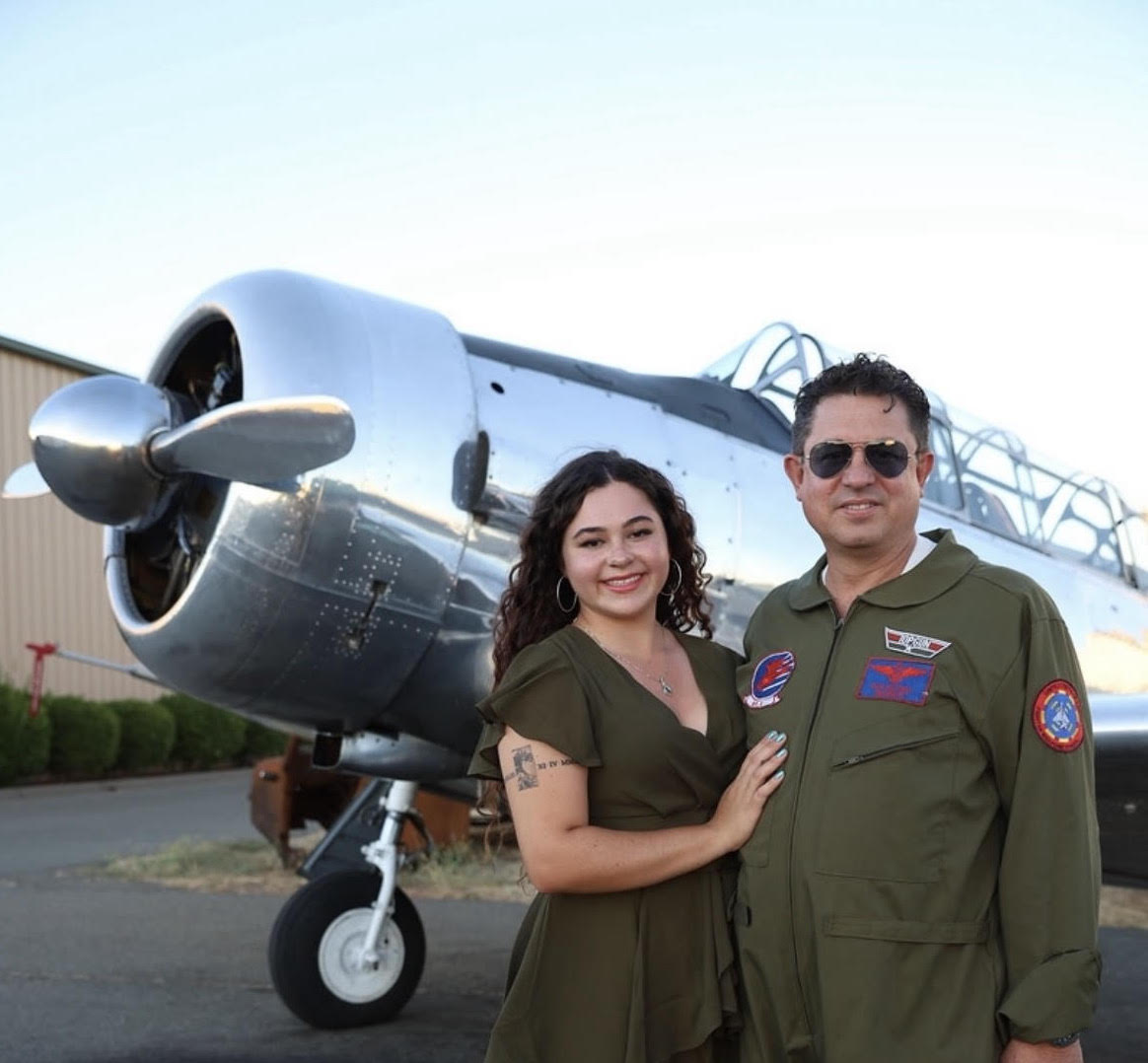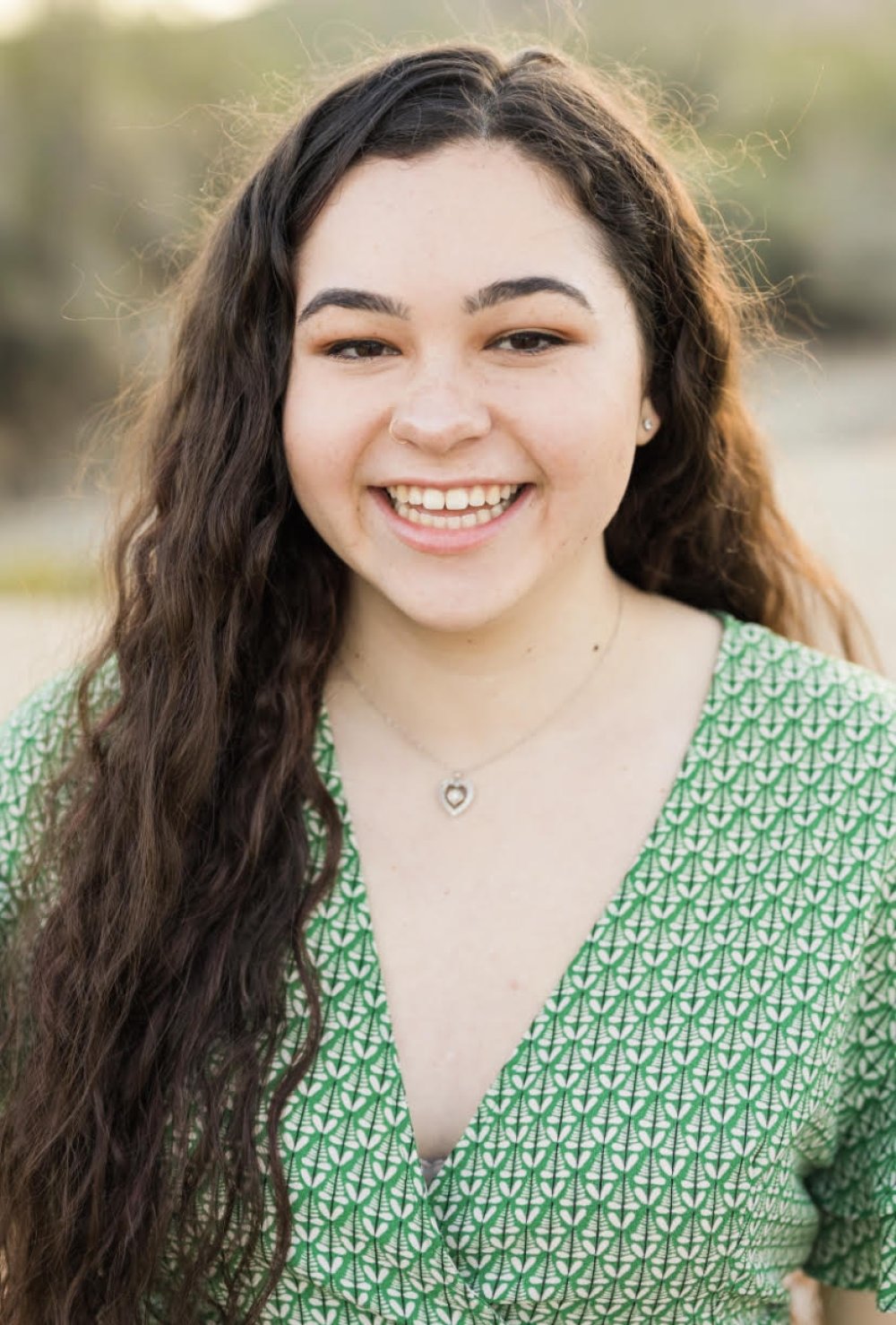
The Great (x4) Granddaughter of a Karuk Tribal Shaman — and a Healer-in-Training
For Bella Hoffman ’23, Indigenous heritage means “knowing that you’ve come from a line of people who have overcome.”
For Psychology major Bella Hoffman ’23, everything ties back to legacy. She sees herself as part of a long line of healers, beginning with her father’s great-great-great-grandfather, who was the shaman for the Karuk tribe in Northern California. From her mother, who is indigenous Puerto Rican, Hoffman experienced a mixture of homeopathic and modern medicine, equal parts aloe and Advil. “I guess it's just in my blood, natural medicine,” she says.
As she describes her family and her place in it, Hoffman emphatically taps her lavender nails against our table outside Cafe Louis. On the Thursday before Thanksgiving break, the campus is subdued, with most students traveling or furiously finishing up homework. Late-day light slants across an empty quad. Hoffman has three papers to write, she tells me, but doesn’t seem too worried. She’s made the time to talk.
She is also looking toward graduation from Saint Mary’s in the spring. Her plans: medical school and a career advocating for robust Indigenous healthcare. She’s also looking for ways to combine Indigenous traditions and modern medical discoveries, she says. “I really want to be able to mesh the two of them together, to be able to heal the whole person—mind, body, soul, and spirit.”
The River at the Center of the Universe
Hoffman was five when she visited her Karuk homeland for the first time. She remembers her family buckling into their RV and making the long trek from California’s Central Valley, up I-5, and deep into the forested Klamath Mountains straddling the Oregon border—nearly two hours from the nearest major town. When they finally arrived, Hoffman’s father brought her to a vantage point. “This is it,” he proclaimed, spreading his arms wide.
The presence of the landscape was enormous. The human presence? She saw a single church, one grocery store, and not much else. “I was like, ‘Oh, it’s so little!’”
“I really want to be able to heal the whole person,” Bella Hoffman says, “mind, body, soul, and spirit. ”
The fact that Hoffman’s tribe has any land at all is a testament to her ancestors' resolve. For millennia, the Karuk people lived along the Klamath River, fishing salmon and farming tobacco; according to their traditions, the river was the epicenter of the universe. It was certainly the center of theirs: 350 miles from the nearest Spanish mission, the Karuk people largely avoided settler interactions until the Gold Rush. In the 1850s, colonizing miners and homesteaders descended on the river basin, expelling tribes through broken treaties and violence. In 1905, President Theodore Roosevelt established the Klamath Forest Reserve, effectively stripping the Karuk tribe of any claim to their homeland.
With no official reservation, Karuk leaders have spent decades fundraising and buying back 1,661 acres of their former 1.04 million acres. Most recently, the Karuk and their neighboring tribes scored a landmark victory when it comes to restoring the place they call home: four hydroelectric dams will be removed from the Klamath, allowing the salmon population to rebound and the tribes to reclaim and heal the river.
“Look back to where you came from”

Hoffman grew up outside of Sacramento, where she attended Catholic schools her whole life. When it came time to apply for college, she was drawn to Saint Mary’s stunning location. “I really liked how it felt like it was in the wilderness, but it wasn't too far from civilization,” she says. As someone who grew up camping at “all the national parks west of the Mississippi,” Hoffman knew she wanted to be near plenty of trees and water. Saint Mary’s fit that bill.
In autumn 2019, Hoffman began her studies at Saint Mary’s. That same year Maya Diaz-Villalta ’22 and a number of other students formed the Native American and Indigenous Student Association (NAISA). But with the pandemic and the subsequent remote learning, Hoffman didn’t get involved in the club until Spring 2022. At the time, she says, “I was really digging for where I came from. After COVID, I think everybody felt really lost.”
At NAISA, she immediately felt at home—“grounded,” she says.
Now, as NAISA’s Publicity Manager, Hoffman is working to create that same community space for others, whether they identify as Indigenous or not. The club regularly hosts events that raise awareness of Indigenous issues and experiences, like the screening of Gather, the award-winning documentary about Native American efforts for food sovereignty, and a recent presentation on Native trauma and resilience by Dr. Karina L. Walters, a member of the Choctaw Nation and co-director of the Indigenous Wellness Research Institute at the University of Washington.
“Find the ways your ancestors moved and coped and fought through hard times.”
The on-campus response to NAISA’s efforts has been positive, Hoffman says. “People have been really receptive to it.”
Hoffman and the other NAISA officers are also pushing for Saint Mary’s to adopt a formal land acknowledgment, one that recognizes that the college sits on unceded Saclan land. Hoffman sees it as “a small step toward acknowledging the people who have lost so much.”
When she considers Indigenous Heritage Month and what it means to her, Hoffman returns to legacy: the people that came before her. She encourages other Indigenous people to do the same.
“Look back to where you came from generationally, finding the ways your ancestors moved and coped and fought through hard times,” she says. “Know that you’ve come from a line of people who have been able to overcome.”
Learn more about the Native American and Indigenous Student Association.
Read about the Klamath Reclamation Project.
Hayden Royster is a Staff Writer with Saint Mary's Office of Marketing and Communications. Write him at hjr1@stmarys-ca.edu.